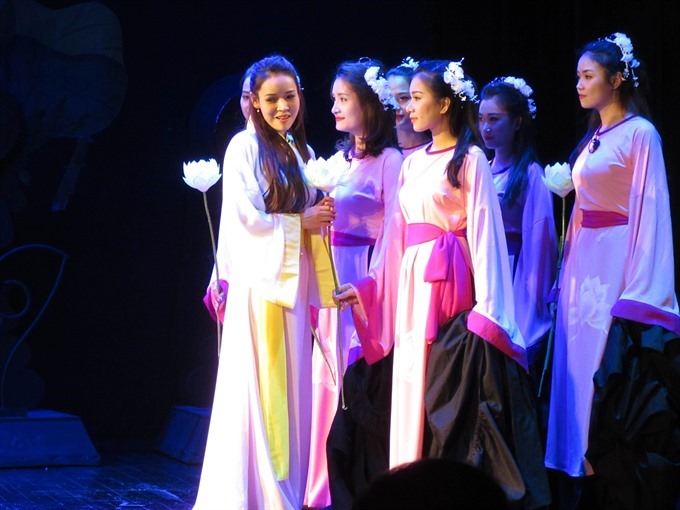 Life & Style
Life & Style

Nguyễn Du’s classic Tale of Kiều will be performed in Việt Nam National Drama Theater, 1 Tràng Tiền street from March 1st to 10th to celebrate the International Women’s Day, March 8th.
 |
| A scene in the play The Tale of Kiều which is performed by artists of the Việt Nam National Drama Theatre last November. —VNS Photo Bạch Liên |
HÀ NỘI — Nguyễn Du’s classic Tale of Kiều will be performed in Việt Nam National Drama Theater, 1 Tràng Tiền street from March 1st to 10th to celebrate the International Women’s Day, March 8th.
The work has been staged in traditional art forms including cải lương (reformed theater), chèo (traditional opera), tuồng (classic drama) and ballet. The national drama theater will adapt this literary work with a combination of singing, dance and drama, creating a new approach to this work.
The play is adapted from The Tale of Kiều by writer Nguyễn Hiếu. The experimental drama combines singing, dance and drama with the use of lotus flower implying a human life which opens slightly, blossoms, and withers.
The Tale of Kiều, an epic poem written by Nguyễn Du (1765–1820), is widely regarded as the most significant work of Vietnamese literature.
The Tale of Kiều’s 3,254 lines were written in lục bát – a traditional Vietnamese verse form, which consists of alternating lines of six and eight syllables, and is the most popular Vietnamese poem of all time.
Depicting the arduous life of Thúy Kiều, a beautiful and talented young woman who had to sell herself into prostitution to save her father from prison, Nguyễn Du overcame harsh social prejudice to praise Kiều’s physical and soulful beauty, as well as her talents and personality.
Through Kiều’s story, the author drew a picture of the corrupt, money-dominated and unequal feudal society in Việt Nam in the late 18th century and the early 19th century, while reflecting the aspirations for the right to live, and the right to freedom, justice, love and happiness. —VNS




